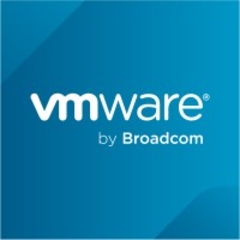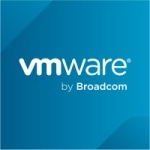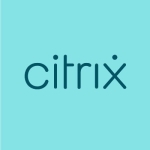What is our primary use case?
I am a system integrator and have experience with many different IT products. I regularly work with a lot of different technologies. Recently, I have been working on configuring VMware and virtualization. For example, I am considering upgrading the ESXi.
We run VMware Workstation locally. You can run it on AWS but that's not necessary for what we're doing. There are use cases where it will be applicable but I'm dealing with a construction company, as opposed to a heavily vested IT company. The use cases are quite a bit more laid back.
We primarily use it for virtualization. We image older systems, so we have a backup copy that's immediately accessible. Those are the major use cases.
How has it helped my organization?
Virtualization is awesome when you're running particular applications and you need to cookie-cutter them, which is what I'm doing. I've got the mining rig pre-built, and I just clone it, set the number of CPUs, and let it run. It can't get easier than that.
I would prefer running off of virtualization for everybody's computer. I would just load the images in them if I could, but that would be asking too much of the consumers, so I don't do stuff like that.
What is most valuable?
Having a user-friendly interface is important for me. I'm not a coder, even though I do a little bit of programming. Also, I don't use the command-line interface when I can avoid it. When I do have to use it, I look up what I'm supposed to type and then type it.
Virtualization in and of itself is the use case feature. We are able to simultaneously run multiple operating systems in a single machine and have virtually no performance hit. I've got 16 cores and 32 threads, so nobody cares if I use 24 of them for mining and use the rest of them for my desktop. It's basically like having a free computer. With all of the resources already paid for and running, why wouldn't you virtualize when you have that many cores? It doesn't make sense not to.
If you've only got four cores, then I would understand if you don't want to virtualize for that purpose. But if you do, why wouldn't you virtualize and have an unRAID server and a video-optimized system, and another one for something else? It just depends on what suit you want to wear that day.
Technical support is an area that needs improvement.
What needs improvement?
The interface is a little wonky and needs to be improved. Honestly, the biggest problem with VMware is not with their interface, as much as their support for the interface.
In order for a virtual machine to run on your system, you have to set the hardware up correctly. If it's an AMD, you need to have virtualization enabled on the CPU. That means going into the BIOS and making sure that your VX is set if it's Intel, or an AMDV is enabled. But, you don't actually find that on an AMD. Rather, you have to go to the SPV and check the box that's there. It would behoove VMware as a company to have better documentation that shows people how to do all of this setup.
It wasn't too big of a deal for me to figure it out because I've been working with it, but I could imagine that someone who's not familiar with the BIOS and not familiar with SPV could get into a lot of trouble just to set it up for virtualization. That's unfortunate. I'm not saying they should make the interface overly simple to use. I'm just saying that they should make their documentation easy to access for the stuff that you need. Specifically, if you're in an area of the application, it should have an information link that goes into detail and sub-detail at that point. That would be good.
I understand the segmentation of different markets that they're trying to achieve in terms of sales, but it would be really nice if they just enabled you to scale. You're limited to a certain number of threads as it is now. It might be 32 threads or 32 CPUs max on VMware Workstation. ESXi can go to 128 or even 700-and-something if you scale it up to vSphere. However, it would be nice if someone purchased VMware and then was able to add those feature sets onto it. That's how their software's actually built. It's all VMware Workstation, yet depending on the configuration and how much you pay, some can allocate 738 CPUs and other ones can only do 32.
Buyer's Guide
VMware Workstation
September 2025
Learn what your peers think about VMware Workstation. Get advice and tips from experienced pros sharing their opinions. Updated: September 2025.
871,469 professionals have used our research since 2012.
For how long have I used the solution?
I have been working with VMware Workstation for 15 years.
What do I think about the stability of the solution?
They're very stable. VMware is remarkable in this regard. Given how well it works, I think that it's insane that people are doing it any other way.
I ran a miner in Windows directly, and it would occupy all of the cores and slow down the computer and cause a ton of problems. Interestingly, it wouldn't yield as much as this virtualized Linux system would in Windows, on the same machine.
I'm not sure how it makes sense that a virtualized machine inside Windows works better than something where you eliminate the middle man and you just run it in Windows, but that's exactly the case.
When you run these virtualized systems, they're running on bare iron, pretty much. They may be in Windows, and Windows might be using other stuff, but they're going to the CPU and saying, "This one, this one, this one, this one is mine," and it just runs.
This means that you get all of the performance advantages of Linux, and none of the overhead of Microsoft spying on you. This is why I think that building every computer out there as a baseline virtualized machine makes a lot more sense. You just press a button on your keyboard, and there's your Windows. Press another one, there's your Mac. Press another one, there's your Linux. Have them all be able to swap files back and forth, and everybody could be having the best of all possible worlds for whatever kind of system they want. Ultimately, Linux would grow and win out.
However, as it is, you give them a bunch of money and they tend to develop theirs a little faster. Linux may be the best system in terms of efficiencies because it's monetized to do so. All of those companies with all Linux servers know that by cutting away the fat, they make the thing work better and they earn more money with the hardware they've spent so much money on. That's the financial incentive.
How are customer service and support?
The technical support is good, although it could be better.
I would rate them a three out of five.
Which solution did I use previously and why did I switch?
I have experience with some similar products. For example, Cisco has one that you can use for free. VMware is what I've been primarily using for the past five years.
I choose to work with VMware because I like the interface and its support for development. I also keep up to date with the most recent versions. For example, there was an update that happened this morning.
How was the initial setup?
The initial setup is straightforward.
The installation is really easy, aside from little issues that it doesn't necessarily tell you when you're cloning something. For example, it may not point out which thing to click on but you can reasonably guess because it's at the top of the list, and it works.
I'm still in the process of tweaking the miners, so optimizing the system is an ongoing process. With this particular software, things change depending on the situation with the mining because you're working on a large network.
It takes about 15 to 20 minutes to clone the system once you've got the image done. The image that I made yesterday, I probably spent an hour or so setting up, and then I can cookie cutter. However, I'm continuing to look into how to optimize it for the number of CPUs, whether two processors with six cores are better than one processor with 12 cores, etc.
What's my experience with pricing, setup cost, and licensing?
The licensing costs are cheap. I pay approximately $100 per year.
That said, I'm not doing anything major. If I had vSphere and multiple servers, and I was loading up 700 processes, then it would be a different story. However, I'm not at that level.
Which other solutions did I evaluate?
The reason that I chose and continue to like VMware is that it's a commercial product and it's funded and it develops and they're improving it. I love open-source, but I understand that some levels of development are more easily attained when there's a monetary incentive behind it.
What other advice do I have?
Overall, this is a good product and I recommend it. My advice for anybody who is considering VMware Workstation is to go ahead and implement it. That said, there is always room for improvement.
I would rate this solution an eight out of ten.
Which deployment model are you using for this solution?
On-premises
Disclosure: My company does not have a business relationship with this vendor other than being a customer.



















